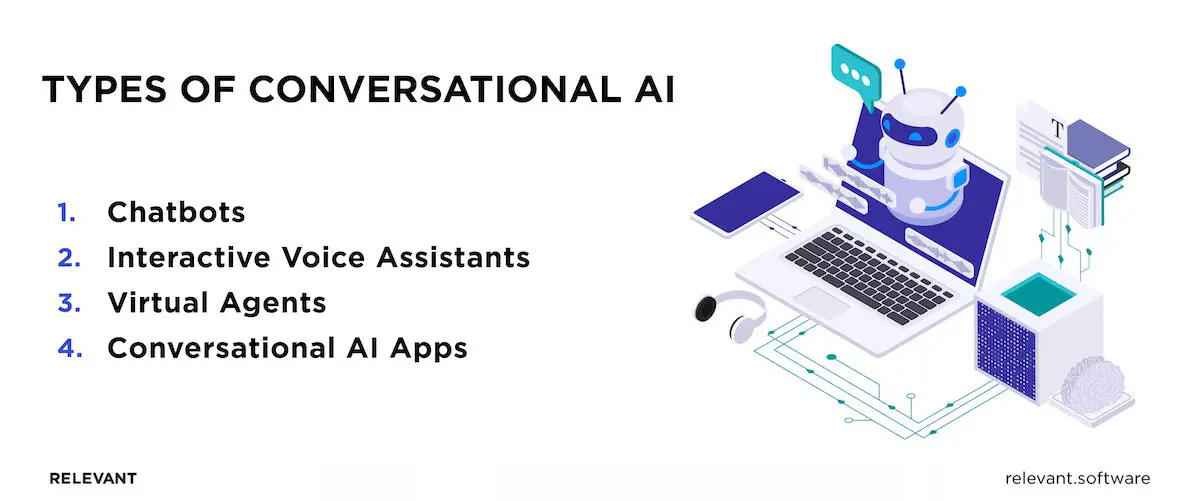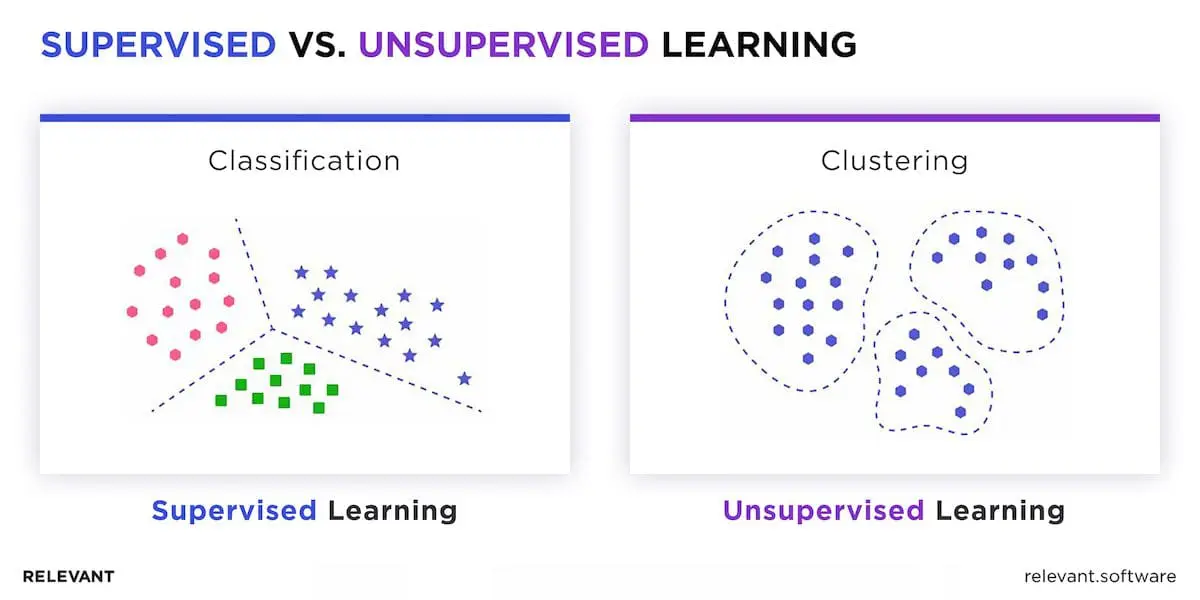What is Conversational AI: It's Not Just Back, it’s Better

What is conversational AI? You might be surprised, but it—whether voice-based or text-based—isn’t a new concept. A decade ago, with the introduction of Apple’s Siri, Microsoft’s Cortana, Amazon’s Alexa, Google Assistant, and Facebook’s M, these technologies promised great potential to amplify people’s daily lives. However, the capabilities of earlier AI versions weren’t as advanced, which led to various limitations, errors, and user frustrations.
Jump to 2024. The scene has drastically changed. Conversational AI appeared in other forms, such as speech-to-text tools like Descript, Otter.ai, and advanced chatbots like OpenAI’s ChatGPT, and suddenly became wildly popular.
As an AI development company, we seek to answer what happened and what more can happen in this space in this article. We will thoroughly explain what conversational AI is – from basic concepts to the implementation steps, to make everything clear for you.
What is Conversational AI?
Conversational AI, a subset of generative AI, specifically focuses on dialogue generation. While generative AI can create various types of content, conversational AI can understand and respond to human conversations. It manages complex conversations, retains context, and even detects nuances in tone and sentiment. It doesn’t just retrieve information; it can draw insights, offer advice, and even participate in debates and philosophical discussions. This turns it into a powerful solution for business needs and personal tasks.
Note. All conversational AI is related to generative AI, but not all generative AI falls under conversational AI. Take text-to-image systems like DALL-E, for instance—they generate content but don’t engage in conversations.

Types of Conversational AI
Conversational AI primarily manifests through conversational interfaces, platforms that enable human-computer interaction with natural language. These interfaces vary from simple rule-based bots that handle predefined queries to advanced AI-powered systems that learn and adapt to manage complex interactions over time.
To begin with, we have:
- Chatbots: These are text-based programs that simulate conversations with users. They can handle simple queries, provide information, or assist with scheduling appointments or answering FAQs. Chatbots vary from simple rule-based setups to sophisticated AI-driven models that continuously learn and evolve. What is an example of conversational AI in action? A customer service chatbot on an e-commerce site that helps users browse products and track their orders is a perfect illustration.
- Interactive Voice Assistants: Through natural language processing (NLP), these systems understand spoken commands and carry out tasks like setting reminders, playing music, or managing smart home devices. What is an example of conversational AI in such a context? Look upon voice-activated systems like Amazon’s Alexa, Google Assistant, or Apple’s Siri.
- Virtual Agents: More sophisticated than chatbots and voice assistants, virtual agents often combine text and voice capabilities. They can manage complex interactions, provide customer support, and even engage in multi-turn conversations to resolve issues or offer personalized recommendations. What is an example of conversational AI that demonstrates this level of sophistication? One notable example is IBM’s Watson Assistant, which leverages advanced natural language processing and machine learning algorithms to understand and respond to a wide range of queries.
- Conversational AI Apps: These are advanced applications that integrate conversational interfaces with intelligent task planning. They can simplify complex tasks into smaller, manageable steps and complete them efficiently. What is an example of a conversational AI app here? We can mention frameworks like AutoGPT and BabyAGI, which handle high-level task planning and decomposition.

Related article – How to create an AI
The Working Mechanism of Conversational AI
Duplicating human conversation with AI is a highly complicated process. A simple dialogue involves more than just words; it includes context, mutual comprehension, and reading verbal and physical cues.
What is conversational AI, and what are the primary components that enable it to understand and respond to user queries? To understand this, we must look at the components that are crucial to the whole process:
1. Natural Language Processing (NLP)
Conversational AI relies on Natural Language Processing to interpret and respond to human language accurately. Let’s look at some key components:
Tokenization
The initial step in NLP is tokenization, which splits a text stream into smaller parts called tokens. These tokens could be words, phrases, or even single characters. By segmenting text, tokenization allows the AI to process and analyze language more effectively. Imagine you read a book without spaces between words—it would be nearly impossible! Tokenization acts as those spaces, which makes the text comprehensible for AI.
Part-of-Speech Tagging
Once the text is tokenized, the next step is part-of-speech (POS) tagging. Here, each token gets labeled with the correct part of speech—be it a noun, verb, adjective, or another type. For instance, “jump” can be a noun and a verb. POS tagging helps the AI determine the correct usage based on the context, which enhances the accuracy of its responses.
Named Entity Recognition
With Named Entity Recognition (NER), the process becomes more precise as it identifies and classifies entities like people’s names, organizations, places, and dates in the text. For example, in the sentence “Apple releases a new iPhone in September,” NER would recognize “Apple” as an organization and “September” as a date. This function allows the AI to identify and reference specific information, which results in more relevant and accurate interactions.
Sentiment Analysis
The sentiment behind the words is crucial for an AI to respond appropriately. Sentiment analysis checks whether a text reflects positive, negative, or neutral sentiments. This analysis enables the AI to tailor its responses based on the user’s mood or tone, which enhances the overall interaction experience. For instance, if a customer is frustrated, the AI can detect the negative sentiment and respond with empathy and solutions.
2. Machine Learning (ML) and Deep Learning (DL)
How conversational AI works involves using machine learning to improve the intelligence and responsiveness of these systems over time.
Training Data
The foundation of any ML model is high-quality training data. Conversational AI systems are trained on vast datasets that contain examples of human interactions. The AI learns to recognize patterns, understand context, and create suitable responses with this data. The more diverse and thorough these data, the more proficient the AI is at handling different types of queries.
Supervised vs. Unsupervised Learning
Machine Learning comprises two key learning types: supervised and unsupervised.
- Supervised Learning: This involves training the AI with labeled data, where each input comes with a corresponding correct output. For example, a dataset might include customer queries and their correct responses. The AI learns from this data to predict reactions to new queries. Supervised learning is highly effective but requires a large amount of labeled data.
- Unsupervised Learning: Here, the AI works with unlabeled data and must discover patterns and connections by itself. This method is useful for tasks like clustering similar queries or identifying common themes in conversations. While unsupervised learning is more complicated, it allows AI to discover insights without explicit instructions.

Neural Networks and Deep Learning Models
Modern Conversational chatbots are powered by neural networks, especially deep learning models. These models feature layers of interconnected nodes (neurons) that process data in sophisticated ways. Deep learning models, such as Transformers, have revolutionized NLP and enabled AI to understand context and nuances in language at an unprecedented level.
Transformers, for example, use mechanisms like attention to weigh the importance of different words in a sentence, which allows for more accurate and context-aware responses. This technology has led to significant advancements in AI capabilities, which makes systems like GPT-4 incredibly proficient at human-like text generation.
In conclusion, the synergy of NLP and ML makes Conversational AI so powerful. From breaking down sentences to capturing emotions and learning from vast datasets, these technologies create seamless and intelligent interactions. Whether you chat with a customer service bot or ask your virtual assistant for the weather, it’s all thanks to the sophisticated mechanisms behind Conversational AI.
3. Speech Recognition and Generation
Speech recognition and generation are pivotal for Conversational AI chatbots because they enable machines to comprehend spoken language and respond audibly. This process involves several stages:
- Audio Capture: The system captures the spoken words with a microphone.
- Preprocessing: The recorded audio is cleaned to eliminate noise and improve the clarity of the speech signal.
- Feature Extraction: The system extracts distinctive features from the audio signal, such as phonemes and the smallest sound units.
- Acoustic Modeling: These features are matched against acoustic models and statistical representations of different speech sounds.
- Language Modeling: The system uses language models to estimate the most likely word sequence from recognized sounds, which enhances both context comprehension and accuracy.
- Decoding: Finally, the system decodes the processed signal into readable text.
This intricate process allows AI to understand and interpret spoken language accurately and facilitates seamless voice interactions.
Text-to-Speech Systems
Text-to-speech (TTS) systems enable Conversational AI chatbots to generate spoken language from text. Here’s the way it works:
- Text Analysis: The system examines the input text to grasp its structure, punctuation, and overall context.
- Linguistic Processing: Then, it processes the text to determine the correct pronunciation, intonation, and rhythm.
- Voice Synthesis: The system converts the processed text into speech using a pre-recorded human voice or a synthetic voice model. Advanced TTS systems produce natural-sounding speech by incorporating pitch, speed, and emphasis variations.
4. Dialogue Management Systems
What is conversational AI, and how does it utilize multi-turn dialogue management to maintain coherent and contextually relevant conversations with users?
Practically, dialogue management systems act as the brains behind conversational programs, orchestrating the flow of conversation and ensuring meaningful interactions.
State Tracking
State tracking, also known as dialogue state tracking, follows the conversation’s context and the user’s goals throughout an interaction. Its features include:
- Context Awareness: The system maintains a record of the entire dialogue history, as well as the user’s inputs, system responses, and the current state of the conversation.
- Goal Tracking: It identifies and updates the user’s goals based on their inputs, ensuring the conversation stays relevant and directed towards resolving the user’s needs.
- Dynamic Updates: The state tracker dynamically updates the dialogue state as the conversation progresses, allowing the system to handle complex and multi-turn interactions effectively.
By accurately tracking the conversation’s state, the AI can provide coherent and contextually appropriate responses, which enhance the user experience.
Dialogue Policy Learning
Dialogue policy learning is the mechanism by which a program determines the best course of action or response at any given point in the conversation. It involves:
- Policy Definition: The system is programmed with a set of rules or policies that dictate how it should respond to various user inputs. These policies are often based on predefined scripts or decision trees.
- Reinforcement Learning: Advanced dialogue systems use it to improve their policies over time. The AI receives feedback from interactions and adjusts its responses to maximize user satisfaction and task completion rates.
- Adaptive Responses: The system learns from past interactions and user feedback and continually refines its dialogue policies to become more effective and efficient.
Developing the correct model-training data by annotating intelligence from real-agent conversations requires continuous human input. This process enables Conversational AI to handle diverse user queries and adapt to different conversation styles, which makes interactions more natural and productive.

Applications of Conversational AI
What is conversational AI capable of? From customer service to education, this technology makes a splash in ways that are both impressive and, sometimes, downright amusing.
Chatbots in Customer Service
Conversational AI transforms customer service, which makes interactions quicker and much less frustrating. Chatbots now handle customer service duties like pros, managing everything from basic questions to more complex issues. Available 24/7, they offer instant responses and free up human agents for more urgent tasks.
Companies like Delta and H&M rely on conversational AI chatbot development services to keep customers happy. Some chatbots are so advanced you might not even realize you are not speaking to a human. Did you know AI-driven customer support can boost customer satisfaction by 20%?
Virtual Assistants
These days, virtual assistants are our digital partners that make daily tasks simple.
- Siri: Apple’s Siri can set reminders, send messages, and answer questions through sophisticated AI algorithms to understand user requests and provide relevant responses. By the way, Siri processes billions of requests each month.
- Alexa: Amazon’s Alexa controls smart home devices, plays music, and even helps with shopping to simplify these activities. It has over 100,000 skills to assist with various tasks.
- Google Assistant: Google’s AI provides real-time information, helps manage schedules, and controls 10,000 smart home devices from more than 1,000 brands.
These assistants constantly learn and evolve, making every update more convenient.

Telehealth Services
Telehealth services, powered by AI, offer remote consultations, allowing you to get medical advice without leaving your couch. These systems assess symptoms, schedule appointments, and provide follow-up care. Platforms like Babylon Health lead the way, make healthcare more convenient, and ensure you never have to sit in a waiting room again.
Interesting fact: Telehealth usage increased by 600% through the COVID-19 pandemic, which highlighted the importance of remote healthcare solutions.
AI in Mental Health Support
Mental health support has never been more accessible, thanks to AI. Apps like Woebot offer therapy techniques, track your mood and provide coping strategies. It’s like having a pocket therapist who’s available 24/7 and never judges you for binge-watching that reality TV show.
Interesting fact: AI-powered mental health apps can help reduce depression and anxiety by up to 30%.
E-commerce
What is conversational AI, and in what ways does it transform customer service by providing real-time, personalized assistance? Let’s look.
Shopping Assistants
We all need a shopping assistant who knows our style and budget, even our penchant to buy socks on sale. AI-powered assistants do just that, guide us through product searches and offer recommendations that feel eerily accurate. Major players like Amazon and Alibaba use these assistants to keep customers engaged and returning for more.
Interesting fact: 45% of online consumers prefer websites with personalized product recommendations.
Enhanced User Experience
Conversational AI makes online shopping smoother than ever, whether it answers questions about a product or helps with checkout. Need help to find the perfect gift or check if those shoes come in your size? AI covers you, offers real-time assistance, and ensures a pleasant purchase experience without the hassle of human error.
Interesting fact: Businesses that use AI in e-commerce see a 30% increase in conversion rates due to improved customer interactions.
Education
How conversational AI works includes interpreting context to provide accurate answers. In its current version, it enhances education through personalized learning experiences and support.
AI Tutors
AI tutors offer customized instruction, which adapts to each student’s learning pace and style to help them grasp difficult concepts and improve their skills. Apps like Squirrel AI and Khan Academy lead in AI-driven education, which makes it more interactive and effective. These virtual tutors provide explanations and quizzes and track students’ progress.
Interesting fact: Studies show that students who use AI tutors can improve their test scores by up to 20%.
Language Learning Applications
Language learning apps powered by AI offer immersive experiences that make learning fun. Applications like Duolingo and Babbel use AI to provide real-time feedback, practice conversations, and personalized lessons, which makes language acquisition more enjoyable and effective.
Interesting fact: Over 300 million people use Duolingo worldwide, and this AI-driven language tool has been shown to increase language retention by 30%.

Advantages of Implementing Conversational AI
In essence, what does conversational AI 2.0 offer that’s so groundbreaking? Primarily, it provides real, practical benefits for businesses and users alike. Let’s review the top advantages of adopting AI power in your operations.

Personalized Interactions
First and foremost, AI can customize interactions based on each user’s preferences and history. For example, a chatbot can recall a returning customer’s past orders and suggest products they might enjoy. This level of personalization makes customers feel valued and understood, which helps businesses build stronger relationships with their customers and increase engagement.
Cost Savings
Conversational AI can greatly lower costs. Routine inquiries automation and support activities reduce the need for a large customer service team. This cuts costs on salaries and overheads related to traineeship, office space, and equipment. Additionally, AI doesn’t need breaks or holidays and maintains consistent productivity. Interestingly, businesses report a 67% reduction in call, chat, and email inquiries after AI chatbot deployment.
Automation of Repetitive Tasks
We all know that repetitive tasks can significantly drain time and energy. Conversational AI takes over these mundane duties and leaves human employees to focus on more complex and creative work. Whether it answers FAQs, schedules appointments, or processes orders, AI handles these tasks efficiently.
Handling Multiple Interactions Simultaneously
Unlike human agents who can handle only one conversation at a time, Conversational AI can manage countless interactions simultaneously. This means no more long wait times for customers and no more overloaded support staff. Whether it’s a peak shopping season or a product launch, AI can handle the surge in queries without breaking a sweat, which ensures smooth and efficient service.
Insights from Conversational Data
Every interaction with Conversational AI generates valuable data. By analyzing this data, businesses can gain deep insights into customer behavior, preferences, and pain points. This information can cover everything from product development details to marketing strategies. Essentially, Conversational AI doesn’t just interact with customers; it helps businesses understand them better and make more informed decisions.
Challenges in Conversational AI
Conversational software solutions are impressive, but their development is not without hurdles. Comprehending these challenges is key to leveraging its full potential.
Ambiguity in Human Language
Human language is filled with ambiguity. A single word can have several meanings, clarified by context. For example, “jam” can refer to a fruit spread or a traffic situation. This ambiguity makes it tough for AI to always grasp the correct meaning, which leads to potential misconceptions. Developers must continually refine algorithms to interpret context better and reduce errors.
Contextual Awareness
Humans naturally feel context, but it’s a tough nut to crack for AI. It must maintain context over multiple interactions to make sense of ongoing conversations. When someone asks, “What’s the traffic like?” and follows up with, “Is there a faster route?” AI needs to associate the two questions. This level of contextual awareness requires sophisticated programming and vast amounts of labeled data.
Handling Sensitive Information
Conversational AI often deals with sensitive data, whether financial data, personal details, or health records, and this information must be handled securely. AI systems must have robust security measures in place to protect against data breaches and misuse. Moreover, users must trust that their information is being managed responsibly, which is a significant challenge for developers and businesses.
Compliance with Regulations
Different regions have their own regulations on data privacy and security. However, laws like GDPR in Europe and CCPA in California add complexity to conversational AI implementation. Conversational AI companies must ensure that their systems are efficient and legally compliant, which can be a tough task that requires constant updates and audits.
Accents and Dialects in Speech Recognition
Speech recognition technology has come a long way but still struggles with different accents and dialects. An AI that understands a standard American accent might struggle with a thick Scottish brogue or an Indian accent. This inconsistency can lead to frustration for users who feel misunderstood by the AI. Improving speech recognition to understand and process diverse accents accurately is a constant challenge.
Complexities in Natural Language Understanding
Natural language understanding (NLU) is at the heart of conversational solutions, but it’s incredibly complex. Slang, idioms, and informal speech can easily confuse AI systems. Additionally, the same phrase might be polite in one culture but rude in another. AI providers must train AI to navigate these subtleties with extensive and diverse datasets, as well as sophisticated models that can adapt to different linguistic nuances.
Addressing Ethical Concerns
AI ethics is a field with many unresolved issues. How can we guarantee that AI systems remain unbiased and fair? What steps are necessary to prevent the misuse of AI? Developers must ensure that AI respects user autonomy, provides transparent responses, and does not perpetuate stereotypes or biases is critical. Most of them actively work to embed ethical considerations into the design and deployment of AI systems.
How to Implement Conversational AI?
Conversational AI implementation (as well as other types) can initially appear unachievable, but with the right measured approach and proficient AI engineers on board, it becomes manageable and highly beneficial. Follow these 15 steps from our AI expert to get it right.
| Step | Process Description | Timeline* |
| 1 | Define Objectives and Use Cases: Clearly outline your organization’s key goals, such as improved customer service, increased sales, or better support. Identify specific use cases like answers for FAQs or handling bookings. | 3-4 days |
| 2 | Identify Gaps: Communicate with key stakeholders, including your internal teams, vendors, and other relevant parties, to identify the right platform and adapt it to your needs. | ~1 week |
| 3 | Select Platform: Conduct thorough research to identify the most suitable conversational AI platform, in view of factors such as natural language processing capabilities, integration options, and ease of use. Evaluate options like IBM Watson, Microsoft Azure, Google Dialogflow, and Amazon Lex. | 1-2 weeks |
| 4 | Gather and Prepare Data: Collect relevant data to train your AI models, as well as historical customer interactions and FAQs. Clean and preprocess this data to ensure it’s usable. | 2-3 weeks |
| 5 | Design Conversation Flow: Develop conversational scripts and prompts that align with identified use cases. Map out typical user journeys and scenarios and create scripts to handle various inputs smoothly. | 1-2 weeks |
| 6 | Integrate Natural Language Processing (NLP): Ensure your conversational AI platform leverages advanced NLP techniques for accurate interpretation of user inputs, along with tokenization, entity recognition, and sentiment analysis. | Ongoing |
| 7 | Train the AI Model: Use your prepared data to teach the AI how to recognize patterns, understand context, and respond appropriately. This involves iterative ML processes. | 3-4 weeks |
| 8 | Integrate with Existing Systems: Seamlessly integrate the AI system with your current CRM, website, mobile app, and other relevant systems to enable real-time data exchange. | 1-2 weeks |
| 9 | Test Thoroughly: Conduct extensive tests, as well as functional, usability, and security testing, to ensure the AI operates as expected. Beta test with a small user group for feedback. | 2-3 weeks |
| 10 | Deploy: Implement the conversational AI system within your workflow and provide user access. | ~2 weeks |
| 11 | Monitor and Optimize: Regularly monitor performance metrics such as user satisfaction and response accuracy. Use this data for continuous improvements and updates. | Ongoing |
| 12 | Gather and Act on Feedback: Encourage user feedback on AI interactions and use this information to enhance the system. | Ongoing |
| 13 | Promote Training and Adoption: Stimulate usage of a conversational AI platform among stakeholders by dedicated education sessions and support. | 2-4 weeks |
| 14 | Measure ROI and Scale Gradually: Regularly assess the return on investment and measure key performance indicators. Start with limited deployment and scale up gradually to handle growth in demands effectively. | Ongoing |
| 15 | Ensure Compliance and Security: Make sure your implementation complies with relevant regulations and security standards, and protect user data through robust encryption and data handling practices. | Ongoing |
* Timelines are approximated
“It’s worth mentioning that these are just rough estimates,” our AI expert says. “The actual timeline can differ depending on your organization’s unique situation. Many conversational AI companies prefer to roll out conversational apps in stages and begin with a pilot project before they move to full-scale implementation. This step-by-step approach helps make adjustments based on real-world use and feedback.”
What is Conversational AI Value?: Final Thoughts
A large number of companies understand the value of conversational technology, which is why the conversational AI market is anticipated to grow to $86.42 billion by 2032, with a CAGR of 23.97% from 2023 to 2032. That means the competition will be strong, and promptness in development and implementation is a key to success.
Are you one of the visionaries planning to create a conversational assistant to benefit your team and improve work processes? If so, contact Relevant. With our outsourcing AI services, you can leverage expert knowledge and experience to ensure your conversational AI project is executed flawlessly and on time, stay ahead of the competition, and achieve your business goals efficiently.



